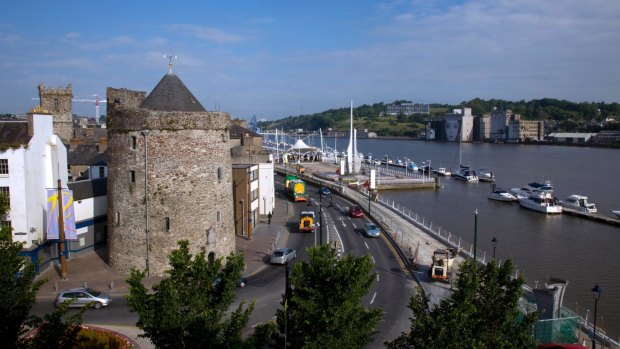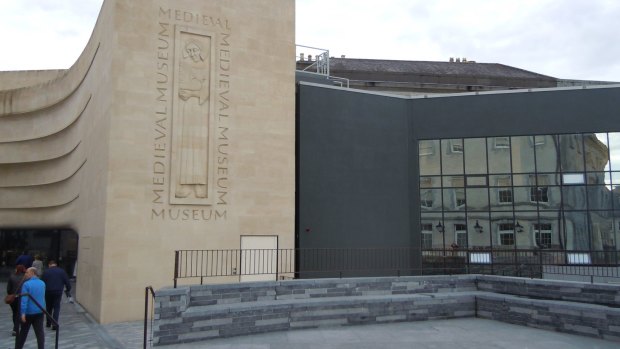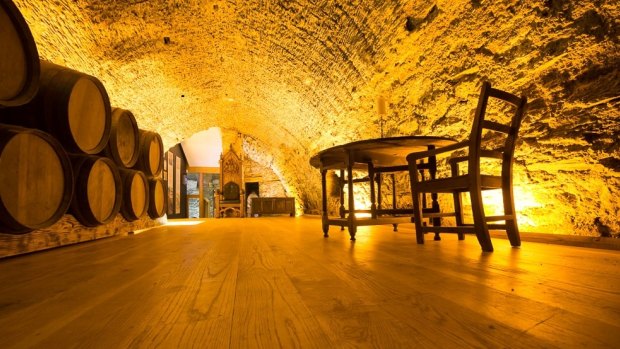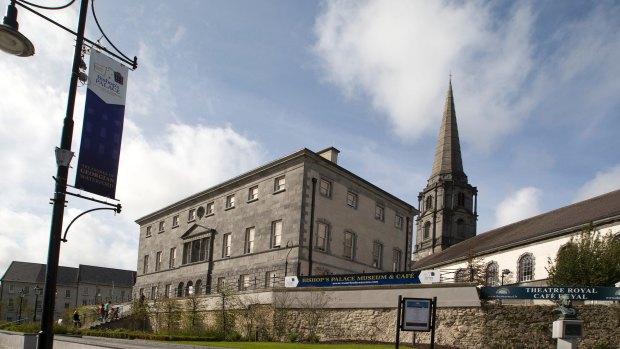This was published 7 years ago
Things to see in Waterford, Ireland: The world's shortest walking tour
By Ute Junker

Early morning view of Waterford city.Credit: iStock
Don't let the name fool you: you won't be wearing out any shoe leather on Waterford's cheekily named Epic Tour. The only thing that's epic about this particular tour is the sweep of Irish history that it covers, from the Vikings to the Victorians. In all other aspects, from duration (45 minutes) to distance (it covers around two kilometres, much of it undercover) – this tour is far from taxing.
It is, however, remarkably illuminating. When my guide Ritchie promises that, "We'll cover 1000 years of history in 1000 paces," he's not joking.
As Ireland's oldest city, home to no fewer than six national monuments, Waterford is the perfect place for a crash course on Irish history. Our tour starts with the Vikings, who established a winter port on the future site of Waterford in 850CE. Once it got too cold for raiding, they would hunker down here for the winter, waiting until spring to take to the rivers again.

Medievel museum, Waterford. Credit: Getty Images
That ancient Viking settlement influenced the shape of today's city. The city's most prominent landmark – the 12th-century tower built by the Anglo-Normans known as Reginald's Tower – is built on the same spot where an ancient Viking tower once stood.
Speaking of the Anglo Normans, their arrival at Waterford in 1169 was another major turning point. After troops headed by the Earl of Pembroke invaded at the behest of the deposed King of Leinster, Dermot MacMurrough, Waterford became the setting for what Ritchie describes as the "the most important wedding in Irish history". Pembroke's marriage to MacMurrough's daughter Aoife entitled him to rule Leinster after MacMurrough's death. Ritchie pinpoints this as the start of 700 years of English rule in Ireland.
MacMurrough and Pembroke are well-known figures in Irish history; however, we also learn about the life stories of lesser-known locals such as William Vincent Wallace. Wallace was a musical prodigy who, at the age of eight, was already composing marches. Wallace grew up to be a celebrated violinist and emigrated to Hobart in 1835. He moved on to Sydney, where he opened the first music school in Australia in Hunter Street and became known as "the Australian Paganini".

Deep-rooted history: A wine vault in Waterford.
Wallace is not the only Waterford lad to have had a stint Down Under. Revered nationalist Thomas Francis Meagher – leader of the Young Irelanders in the 1848 rebellion, the man who first flew the Irish tricolour flag – was transported for life to Van Diemen's Land to after being found guilty of sedition.
Meagher did not stay in Van Diemen's Land for long. He escaped in a rowboat – having first politely informed the authorities of his intention to do so – and after four days at sea was picked up by an American whaler. Meagher made a home in the United States, where he went on to found a newspaper and fight in the Civil War on the Union side, eventually becoming a brigadier general. After the war, he was appointed acting governor of the Montana territory, before his untimely death by drowning at the age of 44.
The Epic Tour does more than just focus on colourful characters, however. Our stroll includes visits to some of Waterford's most historic buildings, including the subterranean Mayor's Wine Vault, dating back to the 1440s, and the nearby Medieval Museum, where the displays include a hat belonging to Henry VIII and a striking set of medieval town charters. These remarkably preserved documents outline the taxes to be levied and the rights the city had been granted. Ritchie points out an unauthorised amendment, where some canny citizens added a few extra rights onto the existing charter, hoping no-one would notice.

Bishop's Palace
The museum's most dazzling exhibit is a number of cloth of gold vestments, the only full set of medieval vestments to survive in northern Europe. The spectacular vestments – woven in Florence, embroidered with biblical scenes in Bruges – were buried beneath the cathedral floor in 1650, before the arrival of Oliver Cromwell's army. They were rediscovered 123 years later, when the medieval cathedral was demolished.
Our tour finishes just steps from where we began, at the Bishop's Palace. Inside, Ritchie wants to show me just one more treasure, a prized relic that made its way to Waterford from distant shores. Local politician Thomas Wyse married one of Napoleon Bonaparte's nieces, Letizia; when she came to Waterford, she brought with her a mourning cross, one of a set of 12 commissioned after the emperor's death by his mother and distributed to family members. Letizia's cross is the only one of these rare artefacts to have survived the centuries, providing yet another colourful tale to be told in Waterford.
Etihad and Emirates both offer one-stop flights to Dublin. See etihad.com/en-au and emirates.com
STAY
The historic Granville Hotel overlooks Waterford's waterfront. Rates start from €94. See granville-hotel.ie
TOUR
The Epic Tour can be booked through Waterford Treasures. See waterfordtreasures.com
Ute Junker travelled with the assistance of Tourism Ireland.
Sign up for the Traveller Deals newsletter
Get exclusive travel deals delivered straight to your inbox. Sign up now.